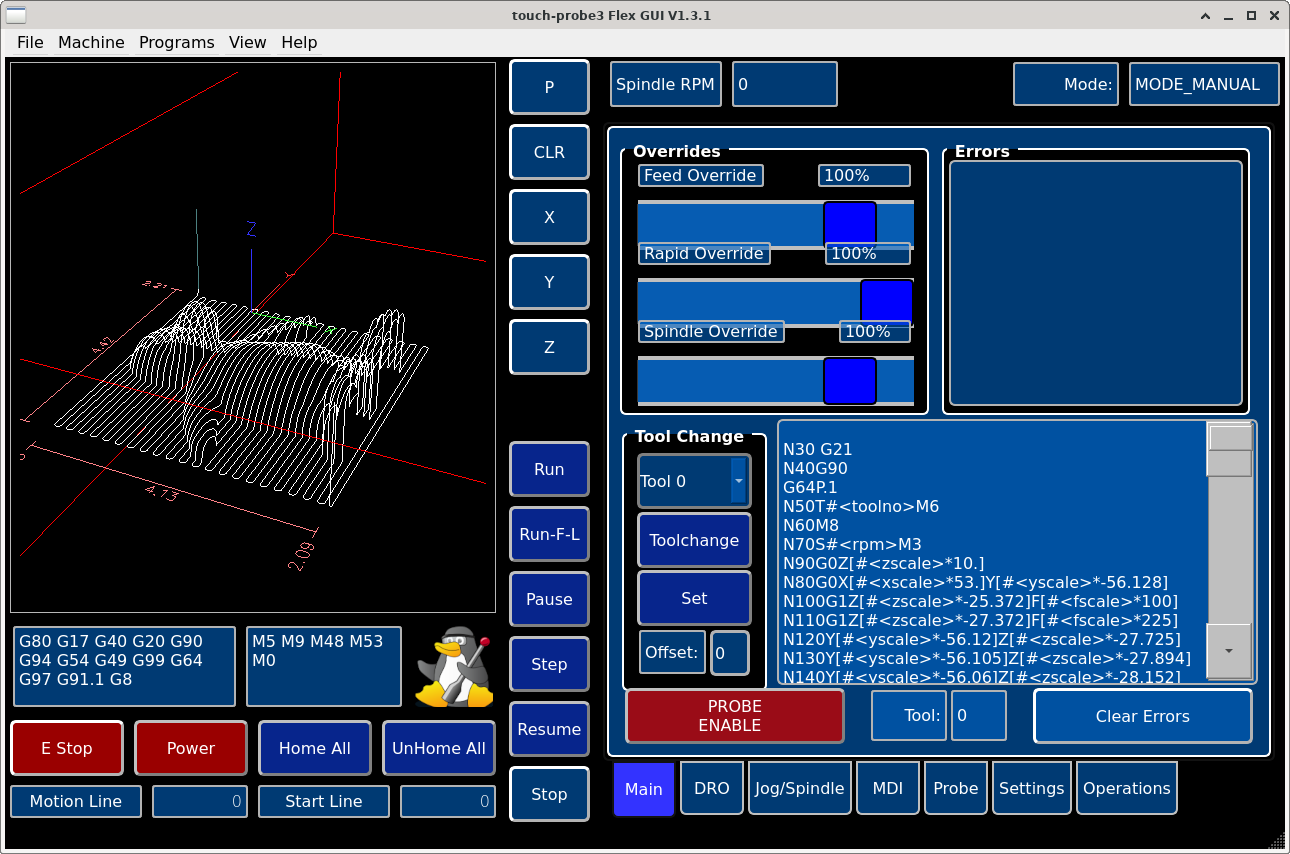Search Results (Searched for: )
- Lcvette

09 Nov 2025 03:50
Replied by Lcvette on topic Probebasic tool length calculation
Probebasic tool length calculation
Category: QtPyVCP
- frayja2002
- frayja2002
09 Nov 2025 03:01 - 09 Nov 2025 21:08
Replied by frayja2002 on topic USB pendant stops working after using macros
USB pendant stops working after using macros
Category: Qtvcp
- tommylight

09 Nov 2025 01:30 - 09 Nov 2025 12:22
Replacement for RPI5 was created by tommylight
Replacement for RPI5
Category: Computers and Hardware
- tsaG
- tsaG
08 Nov 2025 23:44
Probebasic tool length calculation was created by tsaG
Probebasic tool length calculation
Category: QtPyVCP
- tommylight

08 Nov 2025 23:07
Replied by tommylight on topic issues with cnc 2.9
issues with cnc 2.9
Category: General LinuxCNC Questions
- davmer42

08 Nov 2025 23:05
issues with cnc 2.9 was created by davmer42
issues with cnc 2.9
Category: General LinuxCNC Questions
- tommylight

08 Nov 2025 23:04
Replied by tommylight on topic Mesa 7i96s Torch on and arc ok problems?
Mesa 7i96s Torch on and arc ok problems?
Category: Plasma & Laser
- FPVUALAB
- FPVUALAB
08 Nov 2025 22:53
- MTronics

08 Nov 2025 21:48 - 08 Nov 2025 21:49
Replied by MTronics on topic FreeCAD 1.0 Who's using it?
FreeCAD 1.0 Who's using it?
Category: CAD CAM
- PCW

08 Nov 2025 21:36
- COFHAL
- COFHAL
08 Nov 2025 18:54 - 08 Nov 2025 18:55
- FPVUALAB
- FPVUALAB
08 Nov 2025 18:51
- PCW

08 Nov 2025 18:08 - 08 Nov 2025 18:09
Replied by PCW on topic Mesa 7i96s Torch on and arc ok problems?
Mesa 7i96s Torch on and arc ok problems?
Category: Plasma & Laser
- Boltten
- Boltten
08 Nov 2025 17:48
Replied by Boltten on topic Mesa 7i96s Torch on and arc ok problems?
Mesa 7i96s Torch on and arc ok problems?
Category: Plasma & Laser
- tlightus
- tlightus
08 Nov 2025 16:54
Replied by tlightus on topic Screen shots of gui designs
Screen shots of gui designs
Category: Other User Interfaces
Time to create page: 0.283 seconds


